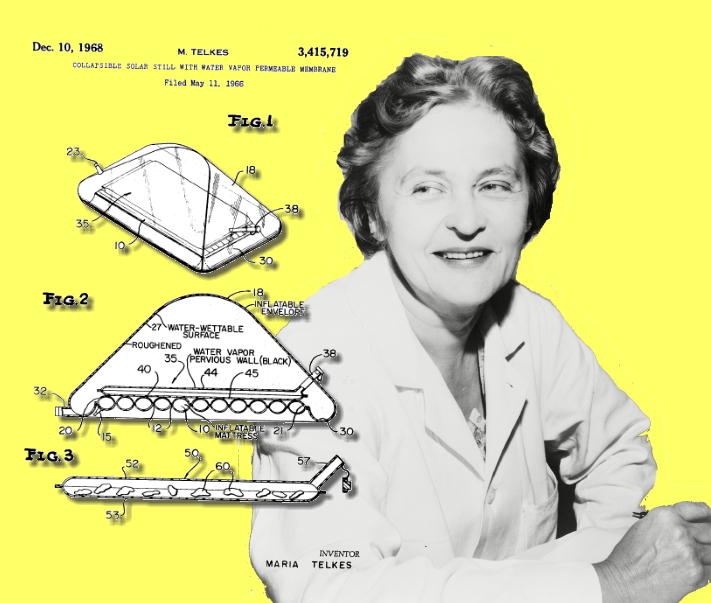Solar Queen
On December 12, 1900, biophysicist and solar power pioneer Mária Telkes was born in Hungary. She built her first laboratory at ten years of age.
Visiting the U.S.A., she worked with surgeon George Crile, co-founder of the Cleveland Clinic, to investigate the energy produced by living organisms, eventually collaborating to write up their findings in Phenomena of Life; a radio-electric interpretation.
Becoming an American citizen, she accepted a research engineering position at Westinghouse Electric where she investigated the conversion of heat energy into electrical energy. She joined the Massachusetts Institute of Technology Solar Energy Conversion Project that presented Telkes with the opportunity to apply her knowledge about heat and energy conversion to innovative practical technologies.
Telkes became a legend in pioneering solar power. She could visualize and execute projects small or large, oceanic or backcountry. She helped develop a solar still for converting seawater into fresh water for inclusion on life rafts at sea. Her visualization was scalable and could be produced as a portable unit for an individual emergency or as a municipal unit for a city.

She applied her knowledge and technical expertise to solve a variety of energy problems that centred on energy conservation. Telkes designed the first solar heating system for an experimental home. For the Ford Foundation, she worked up a solar oven that could be used anywhere on the planet. Safe, effective… and a by-product helped farmers dry crops! Using the principles of semiconductor thermoelectricity, Telkes created the first thermoelectric power generator as well as the first thermoelectric refrigerator.
Telkes held many patents during her career and frequently served as a solar energy consultant. She worked at several government and corporate laboratories establishing solar energy research initiatives and directing laboratories. Usually, Telkes was the only woman and, often, the only person with proven credentials in science, research, application, and administration.
She was the first recipient of the Individual Achievement Award, Society of Women Engineers, for her contributions to the utilization of solar energy. The American section of the International Solar Energy Society gave her the Charles Greeley Abbot Award for her significant contribution to the field of solar energy.
B Bondar / Real World Content Advantage